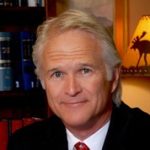In Rains v. Barber (Case No. 17SA248.), the Supreme Court of Colorado analyzed whether the trial court was wrong to grant the plaintiffs a new trial after the jury concluded that the defendants, two pilots, were not negligent in a fatal plane crash. First, the Supreme Court of Colorado addressed whether the trial court’s decision violated C.R.C.P. 59(d). In addition, the court determined whether a trial could proceed for reasons other than those codified in Rule 59.
The case involves a near-miss plane crash that occurred at Erie Municipal Airport, which lacked a control tower. Instead of a control tower directing traffic, pilots communicate with each other when attempting to land and take off. On the day the crash occurred, pilot one was making an attempted landing on Runway 33 with four passengers on board. At the same time, pilot two was taking off in the same direction as pilot one’s landing.
The two planes nearly collided into each other. In order to avoid the collision, pilot one performed an aborted landing maneuver. However, the maneuver caused the plane to stall and crash. All four passengers and pilot one died in the crash. Pilot two survived the near miss. The heirs of the deceased passengers, who are plaintiffs in the case, filed a lawsuit against the estate of pilot one and the second pilot on the grounds that one or both pilots were responsible for the crash.
Three expert witnesses gave testimony at the trial. While one of the experts was in the middle of a cross-examination, the plaintiffs asked how much fault the expert would assign to the pilots for the crash. The defendant objected to the question on the grounds that it was outside of the scope of the expert’s expertise, usurped the role of the jury and called for a legal conclusion. The objection was sustained, which prevented the expert from answering.
After reviewing the evidence, the jury assigned no fault to both defendants. This is where the plaintiffs filed a motion for a new trial under C.R.C.P. 59(d). According to the plaintiffs, the jury’s decision was irregular and a miscarriage of justice. The trial court granted the motion. As a result, the defendants petitioned the Supreme Court of Colorado on the grounds that the trial court failed to state its reason for granting a new trial under C.R.C.P. 59(d).
There are six conditions where C.R.C.P 59(d) allows for a new trial. The plaintiffs’ argument focused on argument on C.R.C.P. 59(d)(1), which calls for a new trial on the grounds of “any irregularity in the proceedings by which any party was prevented from having a fair trial”. There is limited case law on what constitutes an irregularity. Colorado courts may consider an irregularity to be any improper occurrences during a trial that has affected or is likely to affect the outcome.
In its decision, the trial court assumed the jury had been confused in providing its verdict. The sustained motion during the cross-examination of the expert witness was the source of confusion analyzed by the trial court. However, the Supreme Court of Colorado stated that there was no evidence on record that the jury was confused.
In its decision, the Supreme Court of Colorado stated that a “miscarriage of justice” is not a sufficient reason for granting a new trial under C.R.C.P. 59(d). The Supreme Court of Colorado ruled that “The trial court’s stated reasons for granting a new trial did not meet the requirements of Rule 59(d).”

Nationally recognized litigation attorney Thomas Metier practice areas include traumatic brain injuries, spinal cord injuries, trucking accidents and motor vehicle accidents. He is licensed to practice in Colorado, Wyoming, the U.S. District Court–District of Colorado, and the U.S. District Court–District of Wyoming, the 10th Circuit Court of Appeals and the U.S. Supreme Court.













Comments for this article are closed.